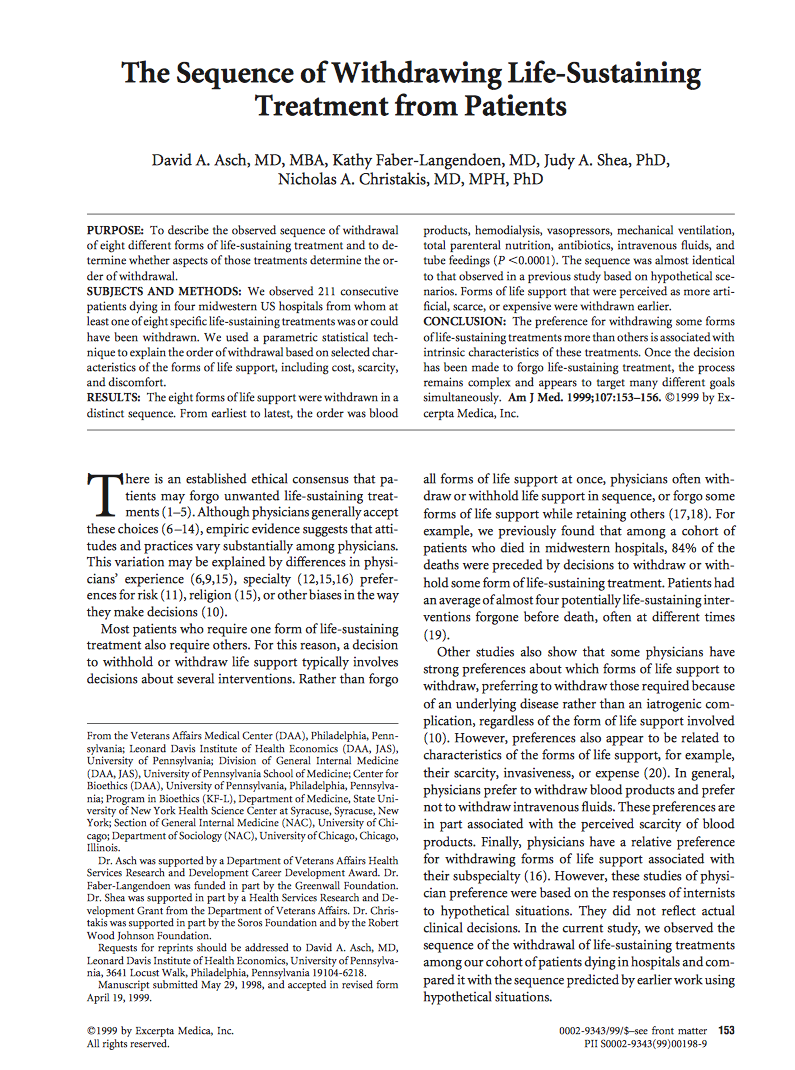
The Sequence of Withdrawing Life-Sustaining Treatment from Patients
Abstract
Purpose: To describe the observed sequence of withdrawal of eight different forms of life-sustaining treatment and to determine whether aspects of those treatments determine the order of withdrawal.
Subjects and methods: We observed 211 consecutive patients dying in four midwestern US hospitals from whom at least one of eight specific life-sustaining treatments was or could have been withdrawn. We used a parametric statistical technique to explain the order of withdrawal based on selected characteristics of the forms of life support, including cost, scarcity, and discomfort.
Results: The eight forms of life support were withdrawn in a distinct sequence. From earliest to latest, the order was blood products, hemodialysis, vasopressors, mechanical ventilation, total parenteral nutrition, antibiotics, intravenous fluids, and tube feedings (P <0.0001). The sequence was almost identical to that observed in a previous study based on hypothetical scenarios. Forms of life support that were perceived as more artificial, scarce, or expensive were withdrawn earlier.
Conclusion: The preference for withdrawing some forms of life-sustaining treatments more than others is associated with intrinsic characteristics of these treatments. Once the decision has been made to forgo life-sustaining treatment, the process remains complex and appears to target many different goals simultaneously.
Citation:
D.A. Asch, K. Faber-Langendoen, J.A. Shea, and N.A. Christakis, "The Sequence of Withdrawing Life-Sustaining Treatment from Patients" American Journal of Medicine, 107(2): 153-156 (August 1999)